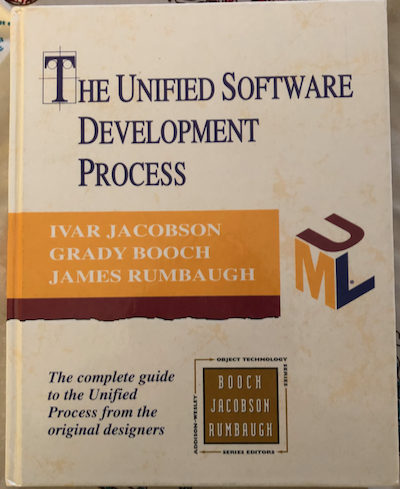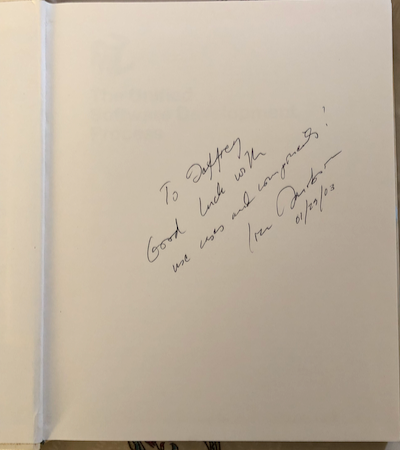Application Context
What we've created is a description of an Application Context in the form of a 3-dimensional tuple also known as a trigram. We want to use that trigram as the basis for extending the functionality of our Platform, by:
- Building the base set of Features to the Platform to produce a Product Line
- Opening up the Extension mechanism to our Partners and Integrators to build on top of the Platform and enhance our Products
Modifying our Matrix
While the Matrix Model is working thus far, you're sure there are some changes you can make to improve upon the initial design.
Actions
While CRUD has dominated your career in building data-centric applications, you've also worked within Frameworks where the basics of CRUD operations was a limiting factor. You've somewhat solved for this in your new model by treating Relationships as first-class citizens, and with the introduction of Perspectives allowing you to target different views and formats of Entities and Relationships within the Platform's Matrix Model. But it's not enough to overcome the following questions that still plague dealing with basic CRUD operations as the distinct set of operations, such as:
- where does search fit in the standard Read operation?
- does Read pertain to both fetching a single Entity as well as a list of Entities?
- are all Updates the same?
- is a Soft Delete an Update or a Delete?
- is a CRUD operation really the same thing at every point in an Application, from Client to API to database?
These and other questions, along with fights you've had with several ORM-based rapid development frameworks to build features beyond basic CRUD functions help you realize and decide that you need to move beyond a simplistic set of operations to allow for a more flexible way of looking at what developers need in order to operate on Entities and Relationships from any different Perspective.
So you change the Matrix Model to be more flexible using Action to capture what is happening to an Entity or a Relationship at any given time. Moving beyond CRUD to have a descriptive set of Actions that pertain to the Application being built allows those Actions to communicate more to developers and integrators.
Orientation
You've been using Perspective to refer to our 3rd dimension in the Matrix Model. While this is a truly unique breakthrough, is it reflective of where we're going with this new Model?
Perspective is focused on the point of view of the Observer of activity. While this was initially useful to get us here, you realize it's not exactly emulating what you're trying to create with the model. It occurs to you that if we're going to define an Application Context not necessarily by what is perceived to be happening, but as the occurrence of something happening in a given direction, then our 3rd dimension should be from the poitn of view of the Actor of the interaction rather than the Observer.
Orientation captures this concept better as an Action will be Oriented in a direction.
Updated Matrix
Our new Matrix is updated to now be:
| Term | Action | Orient(ation) |
|---|---|---|
| Content | Create | Admin |
| List | " | |
| Retrieve | " | |
| Find | " | |
| List | Portal | |
| Select | " | |
| View | " | |
| Watch | " | |
| Watch | Report | |
| User-Content | List | Portal |
| … | … | … |
State Machine
Another bit of knowledge gained from your experience that you're now building upon is the concept that all Applications represent some type of State Machine, with some more complex than others. Often times these State Machines are nested.
By considering our Matrix Model as a set of not only things our Application needs to be able to do, but also as a set of States that represent distinct contexts within which a User of our Application can enter or move through, you open up the door to more.
Stepping back from a simple Client-Server Application of Request/Reply to focus on the Platform idea, you start to focus on how Users experience our Applications and how our Applications experience our Users interacting with it at all levels regardless of how that is accomplished. You recognize that any Application is a State Machine with Application Contexts representing the state at any given moment. You also see that the totality of the state of an Application at any given moment in time is the aggregation of a set of Application Contexts that the User is currently experiencing or the User has initiated within the Application, e.g. a User can be Viewing a Folder in the Admin while also Adding Content to that Folder.
With this Model you see the possibilities unfolding ahead of you for building this Platform.
Remember that the Matrix Model is now representing the set of Application Contexts that a User will experience or flow through as the User interacts with the Application.
Global Features
You're now excited about this Platform architecture and using Application Contexts as the extension points for building Features and Modules when you start to wonder if there are Features that would be harder to add within this model, or just don't fit. You immediately consider whether audit logging is a Feature or not.
Why not?
Beyond logging for diagnostics information in troubleshooting, audit logging is for keeping track of who did what and when so that the application can provide that information to those who need to know who's making changes to the system and verifying whether they should have that ability or not.
In other words, it occurs to you that there are some Features you want to build that will be interested in more than one Orientation or Term or even more than one Action.
Does it make sense to force developers to have to hook into/extend the Application at each point? How large and burdensome can that get? What about Features that come along later with new Application Contexts that weren't expected?
AOP
Not many have heard of it, but once upon a time, in January 2003 I attended a lecture by Ivar Jacobson, one of the 3 creators of Rational, the Rational Unified Process (RUP) and UML. In his lecture he mentioned Aspect-Oriented Programming. I even won a raffle that he signed a copy of his book to me.


During the lecture, Ivar spoke about several topics, namely his primary topic of Testing Designs (before they make it to code), but he also threw out another topic I had to look up later (smart phones were not a thing yet). He mentioned AOP.
Aspect-Oriented Programming (AOP) makes a distinction between business component logic, that which is particular to a specific part of an application, versus Cross-Cutting Concerns, or those parts of an application that "cross-cut" all components, the most obvious example being logging.
As you think about the Audit Logging feature, you're reminded of AOP and that it's a cross-cutting concern for not only applications, but the platform itself.
How can we enable the audit logging as a "cross-cutting" concern to be built using our extension mechanism? Is it even possible?
You realize that if you could solve this, then it would enable the Platform design to provide cross-cutting capabilities for extension like what's expected in AOP without having to change the design of the extension point mechanism and without the distaste of providing a new and competing extension point mechanism for the Platform.
Wildcards
What if we allow a Feature that is using the Platform's extension point mechanism to essentially subscribe to all of the Application Contexts that occur, or only those that occur on a given dimension or two, leaving the other dimension(s) free from being fixed?
You realize that by allowing this level of freedom, you enable a whole set of capabilities for building Features without changing our extension point mechanism. While this will certainly affect how it has to be implemented, the extension point mechanism for developers is demonstrably enhanced without changing its interface or having to introduce another competing mechanism.
So instead of being limited to only fixed Application Contexts like:
{Content, Create, Admin}{Folder-Content, View, Portal}
developers can also make use of:
{*, *, *}{Content, *, Admin}{*, *, Portal}
Representing Application Contexts
You feel very good about these decisions and more emboldened by how it's going to empower developers to build on top of the Platform's Matrix Model of Application Contexts, while be able to provide a single mechanism to extend the Platform.
Next up you start to consider how to represent Application Contexts and how to actually deliver a programmable interface that developers can use in building what becomse a Reactive system.